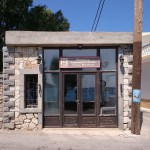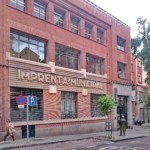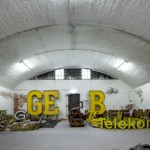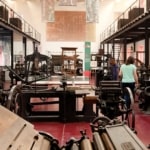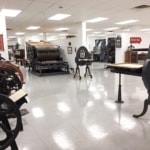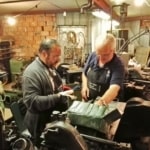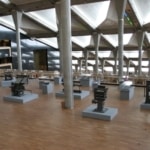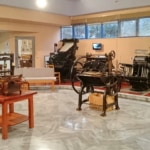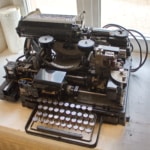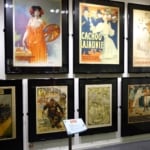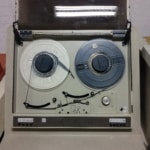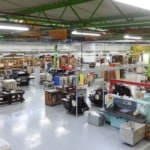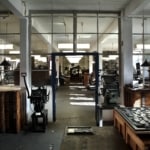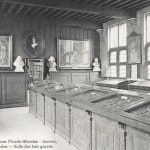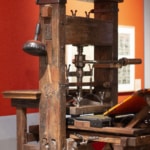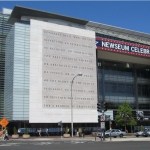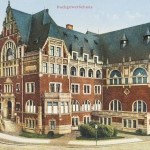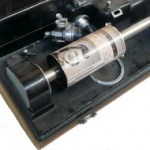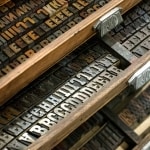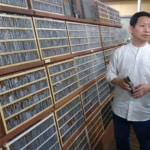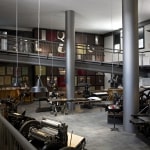The origins of over 250 printing and related museums
The AEPM’s ongoing timeline of printing museums now lists the foundation dates of over 250 museums and related organisations in the field of graphic heritage. It is intended as a research tool for anyone interested in how the institutions of printing heritage have developed since the middle of the nineteenth century.
For five years now the AEPM has been compiling a list of the foundation dates of museums in the field of graphic heritage—museums of printing, book arts, printmaking and newspapers; museums of lettering, typography and graphic design; technical, industrial and generalist museums with printing sections; libraries and archives with permament displays of books and other printed documents; museums of clandestine printing and textile printing; museums of playing cards, maps, printed advertising and packaging; museums dedicated to inventors of printing processes, illustrious printers and graphic designers; museums of photocopiers and comic books; historical paper mills, papermaking museums and even a museum of toilet paper. The list seems to be in danger of becoming endless.
The original idea was to get some idea of where printing museums came from, when they came into existence and why. To begin with, data was thin on the ground because few printing museums publish catalogues, books or articles dedicated to their own history. Likewise, until very recently most printing museum websites have tended to focus on facilities and opening hours, on the star items in the museum’s collections and on its exhibitions and mediation activities. It is only in the course of the last three or four years that they have started to include information about how they came into being and where their collections came from.
As a printing museum association we initially concentrated our inquiries on printing museums …as seems logical. But is it really that logical? For it quickly became clear to us that it is very difficult to define what a printing museum is and what makes it different from the many other types of museums having an interest in graphic heritage. So we broadened our field of vision to include everyone from the Gutenberg Museums in Mainz and Berne to the Hakle Toilet Paper Museum in Düsseldorf, from the Book art museum in Łódź to the Banknote museum of the Ionian Bank in Corfu, and from the Kékfestö Múzeum of indigo textile printing in Pápa to the National Technical Museum in Prague.
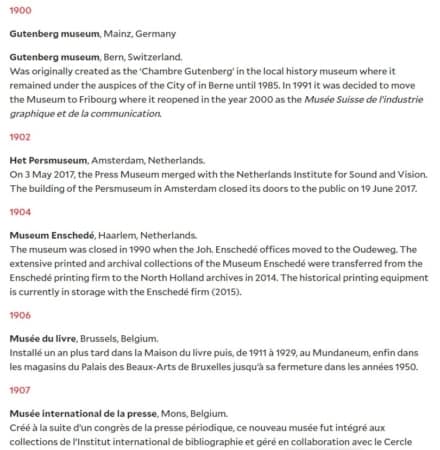 With the help of many colleagues in the library and museum worlds[1] we have been able to track down over three hundred currently operational printing and related museums, plus over a hundred museums which have closed down, often leaving very little trace of their one-time existence. And out of all these museums we have so far been able to identify the foundation dates of just over two hundred and fifty.
With the help of many colleagues in the library and museum worlds[1] we have been able to track down over three hundred currently operational printing and related museums, plus over a hundred museums which have closed down, often leaving very little trace of their one-time existence. And out of all these museums we have so far been able to identify the foundation dates of just over two hundred and fifty.
Even at the most cursory glance the list makes for interesting reading for it plots the course of the increasing recognition of graphic production as a major part of our cultural heritage. The movement starts slowly with only seven museums identified in the second half of the nineteenth century. At that time their displays were dominated by books and prints but with a slowly growing presence of the artefacts of letterpress and intaglio printing. The movement accelerated in the first half of the twentieth century with an additional twenty-five new organisations by the Second World War. The range of printing techniques and printed products was broadening by this time, reflecting the fact that the book had definitively ceased to be the principal driving force of print production, having been overtaken by newspapers, magazines, advertising and a never-ending flow of printed ephemera feeding the needs of industry and commerce.
The immediate post-war period saw a further acceleration in the creation of printing and other museums devoted to graphic heritage: forty-seven to be exact (all these figures are of course provisional as many more museums remain to be identified). Most of them dated from the sixties and seventies, created as a reaction to the demise of letterpress printing which was giving way to offset printing, phototypesetting, electronics and computers which were were becoming widespread in the general trade. But that was nothing as compared with the closing two decades of the century which saw the creation of over a hundred new museums as the scramble began to save the heritage of letterpress printing from the scrapyard. Unfortunately, during the scramble, most of the key developments in photo- and computer typesetting and electronic photoengraving were overlooked and were irretrevably lost for posterity.
Since the turn of the century enthusiasm for new printing museums has abated somewhat with ‘mere’ sixty new museums between 2000 and 2020. That said, permanent and temporary exhibitions of books and other printed documents of all sorts have become an established feature in libraries, archives and university special collections on a scale unthinkable fifty years ago when such activities were luxuries only major heritage libraries could afford. Interestingly, though depressingly for anyone interested in the development of the institutions of graphic heritage, library histories—even the most recent ones—still devote hardly a word or a footnote to exhibitions which for the moment remain the exclusive domaine of librarianship manuals preoccupied with the day-to-day running of libraries and of a small number of researchers from the world of graphic design which has in recent years hotly debated the possibilities and limits of displaying graphic objects in an institutional context.
The preceeding paragraphs offer only the sketchiest outline of how the topography of printing heritage institutions has developed over the last century and a half, but hopefully the AEPM’s Ongoing timeline of printing museums will suggest further lines of research.
Enjoy!
[1] Nous remercions tout particulièrement Jürgen Wegner, rédacteur en chef du Shadowland Newsletter, basé à Sydney, qui a inlassablement passé au crible ses vastes archives à la recherche de traces de musées pertinents, notamment en Europe de l’Est et en Australie.
